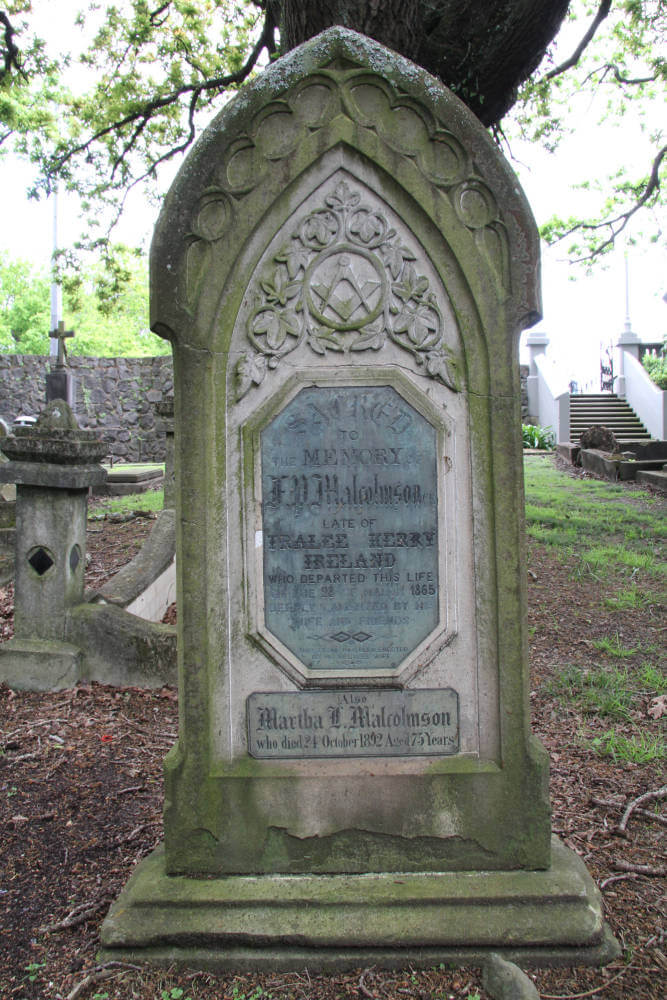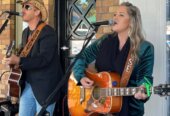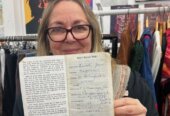
Malcolmson’s grave at Symonds Street cemetery, Auckland.
The silence of the tent surprised Rowland Long when he returned to it around 10.30 on an April night in 1865.
Rowland was part of Frederick Malcolmson’s survey party working around the Ngāhinapōuri district and he was accustomed to 45-year-old Frederick’s heavy sleeping which was accompanied by loud breathing and significant snoring.
When Rowland left the tent around 4pm to visit Captain Lewis, Frederick was asleep. His distinctive snores were later heard about 10pm by a couple of other men who found Frederick sound asleep with his head lying very low. They raised his head by putting a pillow under it.
Now Rowland struck a light and approached Frederick but to his great consternation still heard no sounds of breathing. He felt Frederick’s pulse, which was still.
The inquest jury consisted of 10 civilians made up of nearby survey parties. They viewed the body, which was lying in the surveyor’s camp, precisely in the position in which it had been discovered. Frederick was described as a very stout gentleman, with a short thick neck. The cause of his death was given as heart disease.
Frederick’s wife Martha lived in Auckland but Frederick was buried at Te Rore. His coffin was taken by canoe from Alexandra to Te Rore where eight soldiers of the 40th Regiment carried it to the grave site, followed by a number of the men from various survey parties.
The elaborately named Frederick Prussia Haughton Malcolmson was a civil engineer and land surveyor who had arrived in New Zealand on the ship Aloe with his wife Martha just two years before. He arrived with great fanfare – newspaper advertisements trumpeted that he most respectfully announced to “the Nobility and Gentry, the Municipal and other public bodies of the Colony of New Zealand, that he had taken up his residence in the City of Auckland” where he intended practising in his profession.
A very complimentary address from the members of the Tralee Young Men’s Christian Association was also published testifying that his professional abilities had been highly appreciated by the people of Tralee.
Frederick was very fond of Tralee and was a loquacious letter writer springing to its defence in both Irish and New Zealand newspapers. He was also very fond of New Zealand and in November 1863 wrote a gushing letter to Ireland’s Kerry Evening Post praising this most beautiful country in the world.
His wrote that house was delightfully situated in the suburb of Parnell. Auckland was set in the very centre of a tremendous volcanic eruption. The climate was the finest on the face of the globe. Nature had done a great deal for New Zealand where the sun went north instead of south. He only wished all his Kerry friends were there. He had not seen one person out of employment and in his own employment there was not a matter connected with engineering that he was not consulted upon.
He enclosed three original documents to prove there was “no humbug about the matter” – they would show the position he held although only five months in the Antipodes. He then added cryptically that he soon would “be in Kerry, on a Government expedition of some importance, of which I shall in time let you know — it has been hinted to me, but a direct offer not made — it may put some cash in your pocket.”
His top-secret government mission is unclear but during his two years in New Zealand he worked on surveying the railway to Drury, investigated the levels of Auckland city and laid out the first military township in the Tauranga district.
In July 1864 his letter to the Kerry Evening Post came back to haunt him. Now picked up by New Zealand’s Southern Cross newspaper scorn was heaped upon his claims. The ‘sun going north’ also caused hilarity. Undeterred, Frederick pushed on and in 1865 surveyed Rangiriri which earned him great praise.
But within eight months he was dead. Three months later his body was exhumed and taken to Auckland at the request of his wife. Frederick was re-interred at Auckland’s Symond’s Street cemetery, his headstone as ornate as the man himself.








